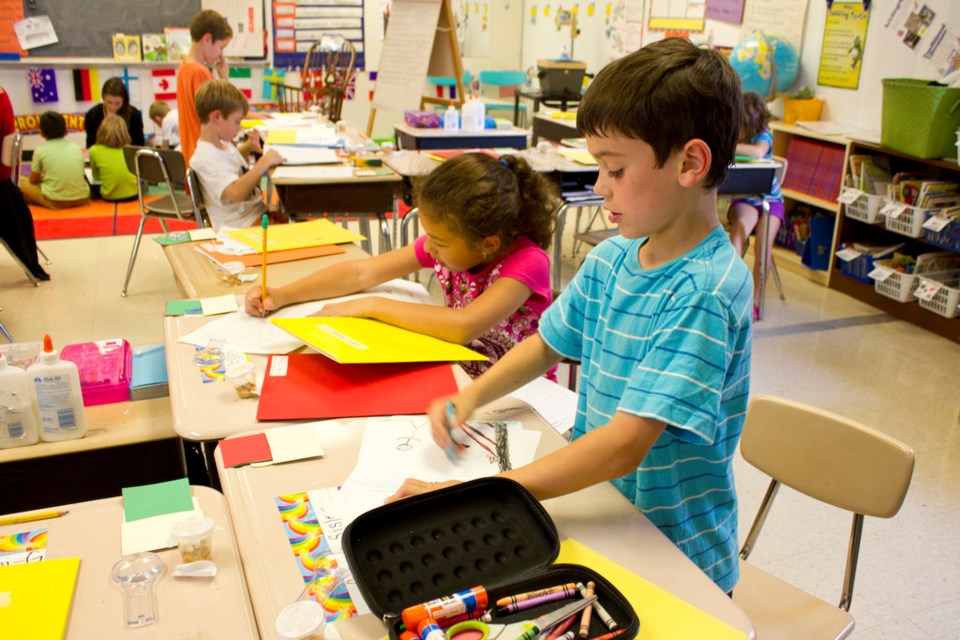A St. Albert educator says she likes what she sees in Alberta’s new K-to-4 curriculum, but wants to know more about how it will be implemented.
Alberta Education Minister David Eggen released drafts of the new K-to-4 curriculum last week. The release came on the heels of an Edmonton Journal column that criticized the proposed Social Studies curriculum for not putting enough emphasis on history and geography.
Back in 2016 the province announced plans to revise the entire K-to-12 curriculum by 2022. Several hundred teachers are working with the province to rewrite the curriculum, which outlines what is taught at each grade. The K-to-4 curriculum is expected to be approved by this December, but the province has yet to say when it would actually be implemented.
Rhonda Nixon, the assistant superintendent of learning services for Greater St. Albert Catholic, is part of the provincial advisory committee that is reviewing drafts of the new curriculum and advising the province on how to implement it.
Alberta and Alberta’s history are still very much part of the Social Studies curriculum, Nixon said. But instead of just learning history, which kids today can look up online, the emphasis in the draft is on using Alberta’s past as an example with which to think critically about the world today.
“It’s not about studying Alberta anymore. It’s about studying Alberta to understand other places including Alberta.”
Concepts over process
Broadly speaking, the new curriculum tends to be far less prescriptive than the old one, with a greater emphasis on concepts than techniques.The current Fine Arts curriculum (last revised in 1985) outlines a long list of very specific concepts and techniques for students to practise, for example, shapes, perspective, colour, painting, drawing and frottage. You learn how to draw with shapes and lines, but not why you’re doing so, Nixon said.
The new curriculum relates everything back to big, overarching concepts that stretch across grades and subjects, Nixon added.
“It’s a purpose-based, large-idea-based curriculum.”
Instead of learning about recycling in one grade and light in another in Science, for example, students learn about biodiversity, with lessons on weather, water, and soil health from K-to-4 all linking back to that concept. Likewise, while Math still includes the usual lessons about counting and multiplication, it now emphasizes using math to solve real-world problems, such as counting up money.
In Social Studies, the big idea is how diversity can be a resource, Nixon said. Students learn how they can participate in their communities, how diverse experiences shape stories about Alberta’s past and how interactions between diverse peoples shape identity.
“There’s not a unit called ‘History’ because we’re not teaching (students) to be historians. We’re teaching them how to be critical thinkers,” Nixon said.
Whereas First Nations, Métis and Inuit peoples were hardly mentioned in the old curriculum, the new one features frequent references to them in almost every grade and subject. Students will learn about Indigenous methods of timekeeping in Math, for example, and how Indigenous peoples used rocks with various traits in Science.
This shows that the province is serious about its commitment towards reconciliation, said Vincent J. Maloney teacher Billie-Jo Grant, who won a national award last year for her efforts to teach Indigenous history.
“In regards to First Nations, Métis, and Inuit in Canada, we have a great deal of learning but also some unlearning to do,” she said.
These are some big shifts, and teachers will need training and resources to understand how to plan their lessons around these big ideas, Nixon said. She also wanted to see more detail on how teachers would assess students under this new curriculum, and an actual implementation date.
The province is expected to hold more public information sessions on the curriculum review later this year. The current drafts can be found at bit.ly/2Lf6iMC.




